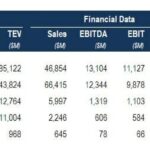Comparing large datasets in Excel is a common task for professionals in various fields, including accounting, auditing, and data analysis. This process is crucial for tasks like reconciliation, anomaly detection, trend identification, and ensuring data accuracy. This article explores several techniques to effectively compare two large datasets in Excel, ranging from simple conditional formatting to leveraging the power of Power Query.
Techniques for Comparing Large Datasets
Excel offers a diverse range of tools for data comparison. Choosing the right method depends on the specific needs of your task and the complexity of your data. Here are some key techniques:
1. Conditional Formatting for Quick Comparison
Conditional formatting provides a visual way to quickly highlight differences between two columns. The built-in “Duplicate Values” rule allows you to format cells containing duplicate or unique values, making discrepancies immediately apparent. This method is ideal for a quick, visual overview of similarities and differences.
2. Row Difference Technique for Identifying Mismatches
This technique allows you to quickly identify matching and non-matching rows across two columns. By selecting both columns and using the “Go To Special” function (F5), you can choose “Row differences.” Matching cells will remain white, while unmatched cells will be highlighted in gray.
3. IF Condition for Explicit Matching Status
The IF function provides a more explicit way to identify matching or non-matching rows. A simple formula like =IF(A2=B2,"Matching","Not Matching") can be used to compare corresponding cells in two columns and display the result. This method clearly labels each row’s comparison status.
4. MATCH Function for Precise Matching
The MATCH function returns the position of a specific value within a range. This function is particularly useful for finding the exact location of a value in a large dataset, facilitating precise comparisons and lookups.
5. Utilizing Tables for Dynamic Range Sizes
When dealing with datasets that frequently change in size, converting your data into Excel Tables is highly recommended. Tables automatically adjust formulas and formatting as data is added or removed, ensuring consistent and accurate comparisons.
6. VLOOKUP and XLOOKUP for Value Retrieval
VLOOKUP and XLOOKUP are powerful functions for retrieving data from one dataset based on a matching value in another. These functions are invaluable for tasks like reconciling transactions, merging data, and performing complex lookups.
7. Composite Columns for Enhanced Comparison
Creating a composite column by combining key identifiers from both datasets can simplify the comparison process. This allows you to easily identify matching records based on a single unique identifier.
8. Power Query for Advanced Data Transformation and Comparison
Power Query, a powerful data transformation and cleaning tool built into Excel, offers advanced capabilities for comparing large datasets. It allows you to import, transform, and merge data from various sources, enabling complex comparisons and analysis.
Conclusion
Comparing large datasets in Excel can be efficiently achieved using various techniques. Selecting the appropriate method depends on the specific requirements of the task. By understanding the capabilities of each technique, users can streamline their workflow, enhance data accuracy, and gain valuable insights. From simple visual comparisons using conditional formatting to leveraging the power of Power Query, Excel provides a comprehensive toolkit for effective data comparison and analysis.
